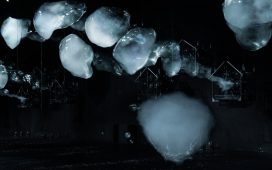
This story is part of our annual look at the state of American design. This year, we’re highlighting work that shines through an acrimonious moment—and makes the case for optimism.
In early 2021, when vaccines were still new and pandemic lockdowns were fresh in our memories, stalwart New York design gallery R & Company did something bold. They launched what they said would be a triennial exhibition representing nothing short of the state of design in America, an undertaking more on the order of a museum than a commercial gallery. Titled “Objects USA,” it was both an homage and a corrective to an exhibition of the same name that opened in the 1960s. Under the direction of curator Glenn Adamson, the R & Company show surveyed a broad range of one-off and small-edition collectible work by designers around the country—drawing from the gallery’s own roster and well beyond.
This year, they launched the second edition, which runs through January 10, putting forward work by more than 50 artists that are representative of a country in a very different position than it was three years ago—an election, acrimony, war, political violence, I don’t need to explain. To help us wrap our heads around various forms of designing and making and place them within the chaos of contemporary American culture, the gallery brought in co-curators Kellie Riggs and Angelik Vizzcarando-Laboy who organized their selections into seven personae: First, the Truthsayers, keepers of material honesty; next, Betatesters, pioneers of an in-progress futurism; followed by Doomsdayers, more grunge than gloomy. Then, Insiders, Mediators, Codebreakers, and Keepers. More on them in the captions.
Moving through the show, I thought of my friends the Codebreakers and the Mediators and recognized that I might be a Doomsdayer or a Betatester at various moments. I could empathize with making something from one of those points of view or another, which created an intimacy with the work that one rarely feels looking at conceptual furniture. The typology feels very human, though it didn’t overdetermine any of the pieces so much as offer a series of personified guides through the exhibition.
Of everything in the show, these are some of the works I liked best and that I hope represent the direction of design in the States, no matter where the rest of the country goes.












